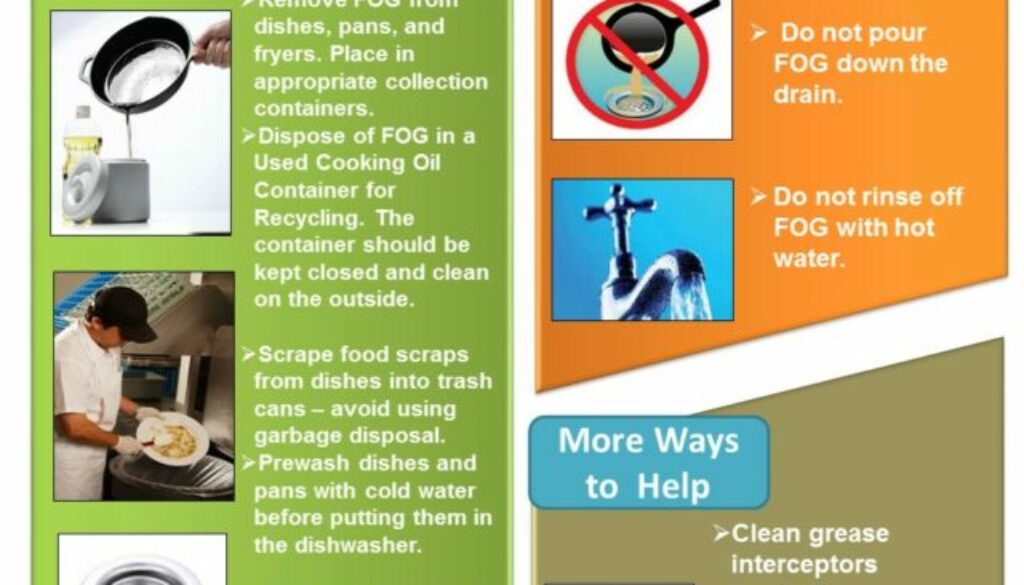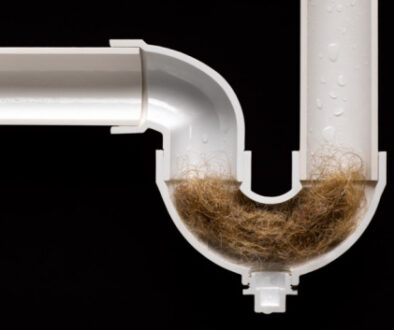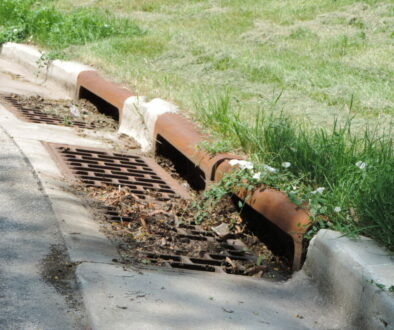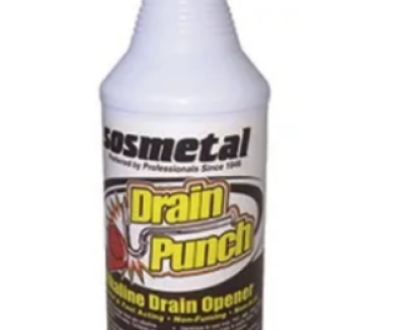How To Dispose Of Drain Cleaner
Are you wondering what to do with that old bottle of drain cleaner sitting in your cupboard? Well, fret no more! In this guide, we’ll show you how to safely dispose of drain cleaner without harming the environment. So, let’s dive in and find out how to properly get rid of this chemical household product.
Now, you might be thinking, “Why is it important to dispose of drain cleaner properly?” Good question! Improper disposal can have serious consequences, such as polluting our water sources and harming aquatic life. That’s why it’s crucial to handle drain cleaner with care and dispose of it responsibly.
So, how do you dispose of drain cleaner, you might ask? We’ve got you covered! In the following paragraphs, we’ll provide you with safe and eco-friendly methods to dispose of drain cleaner, ensuring you’re doing your part in protecting the environment. Let’s get started on this important journey to proper drain cleaner disposal!
1. Check the label: Follow the manufacturer’s instructions for safe disposal.
2. Dilution: If the cleaner is liquid, pour it into a large container of water to dilute it.
3. Neutralize: Add baking soda or a neutralizing agent to deactivate any remaining chemicals.
4. Local regulations: Research local regulations for hazardous waste disposal.
5. Dispose responsibly: Take the diluted cleaner to a designated hazardous waste facility or contact local authorities for guidance.
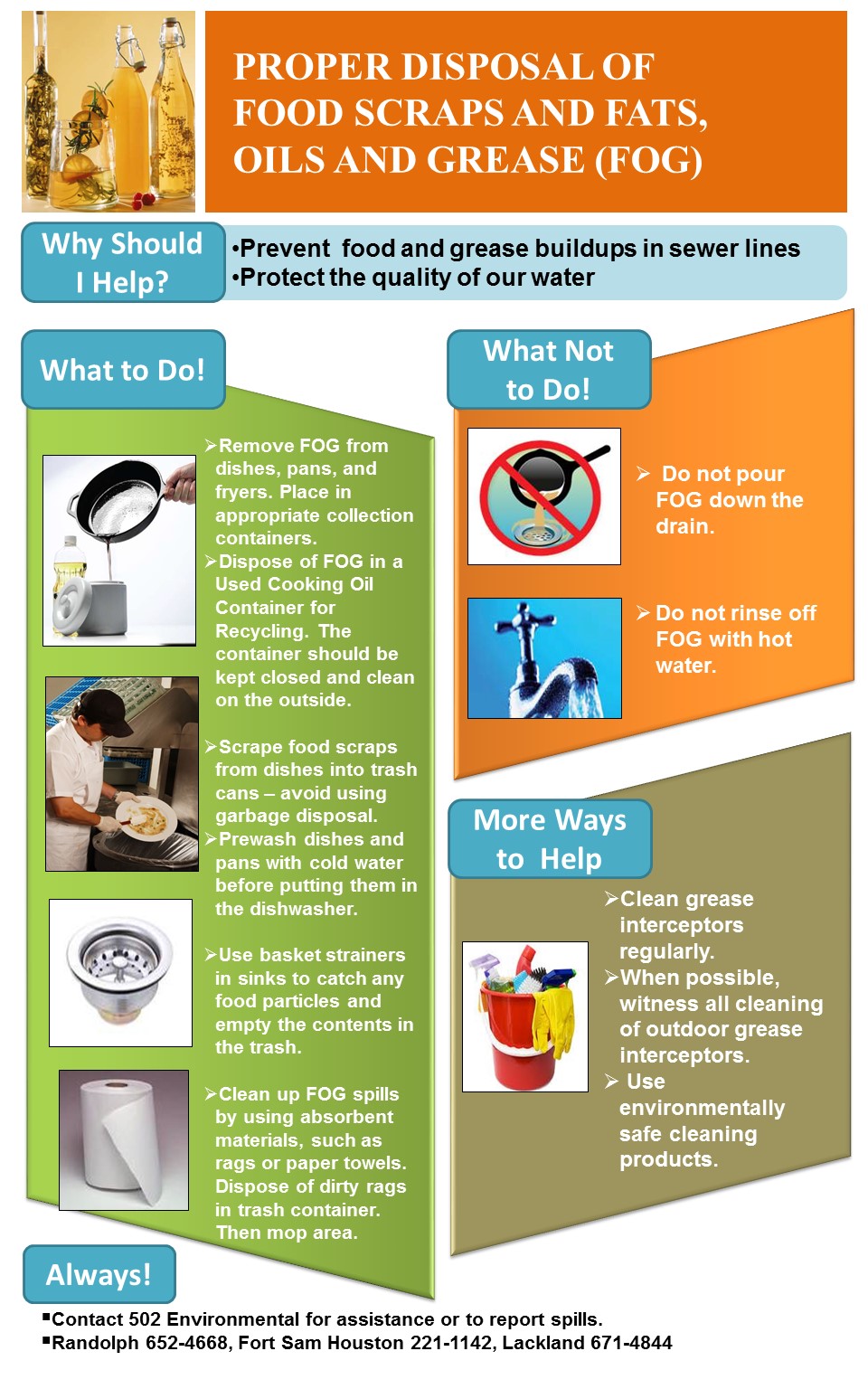
How to Properly Dispose of Drain Cleaner: A Comprehensive Guide
Drain cleaner is a powerful and effective solution for unclogging drains and pipes. However, it is important to handle and dispose of drain cleaner properly to prevent harm to the environment and human health. In this comprehensive guide, we will provide you with detailed information on how to safely and responsibly dispose of drain cleaner. Follow these steps to ensure that you are properly disposing of drain cleaner and minimizing the negative impact on the environment.
Why is Proper Disposal of Drain Cleaner Important?
Proper disposal of drain cleaner is crucial for several reasons. First and foremost, many drain cleaners contain harmful chemicals that can be toxic to humans and animals if not handled correctly. It is important to prevent these chemicals from entering our waterways and soil, where they can have detrimental effects on ecosystems and wildlife. Additionally, improper disposal of drain cleaner can also lead to pollution of water sources, posing a risk to drinking water supplies. By following the proper disposal methods outlined in this guide, you can help protect the environment and prevent potential harm to both humans and wildlife.
1. Read the Label Carefully
Before using any drain cleaner, it is crucial to carefully read and follow the instructions and warnings on the label. The label will provide specific information about the product’s ingredients, disposal instructions, and any precautions that need to be taken. By familiarizing yourself with the label, you can ensure that you are using the product safely and correctly, and you will also have the necessary information for proper disposal.
When reading the label, pay attention to any specific instructions related to disposal. Some drain cleaners may require special handling or may need to be taken to a designated facility for disposal. It is important to follow these instructions to ensure that the drain cleaner is disposed of in the appropriate manner.
If the drain cleaner label does not provide any specific disposal instructions or if you are uncertain about how to properly dispose of the product, it is best to contact your local waste disposal facility or a hazardous waste collection center for guidance. These organizations will be able to provide you with the necessary information on how to safely and legally dispose of the drain cleaner.
2. Consider Environmentally-Friendly Alternatives
While conventional drain cleaners can be effective at unclogging drains, they often contain harsh chemicals that can be harmful to the environment. Consider using environmentally-friendly alternatives to traditional drain cleaners. There are several natural and eco-friendly drain cleaning solutions available on the market that are just as effective but much safer for the environment.
One popular alternative is a combination of baking soda and vinegar. Simply pour half a cup of baking soda into the drain, followed by half a cup of vinegar. Cover the drain and let the mixture sit for 15-30 minutes. Then, flush the drain with hot water. This natural solution can effectively break down clogs and is safe for both your pipes and the environment.
Another eco-friendly option is enzyme-based drain cleaners. These cleaners use natural enzymes to break down organic materials, such as hair and grease, which can cause clogs. Enzyme-based drain cleaners are not only effective but are also biodegradable and safe for the environment.
3. Safely Store Unused Drain Cleaner
If you find yourself with leftover drain cleaner that you no longer need, it is important to store it safely until you can properly dispose of it. Keep the product in its original container, tightly sealed, and stored out of reach of children and pets. The storage area should be cool, dry, and well-ventilated to prevent any leaks or spills.
It is crucial to never mix different types of drain cleaners together or with other chemicals. The combination of certain chemicals can create hazardous reactions and pose a safety risk. Always follow the manufacturer’s instructions for storing and handling the product to ensure your safety and the safety of others.
When storing drain cleaner for an extended period, it is important to periodically check the container for any signs of damage or deterioration. If you notice any leaks, cracks, or other damage to the container, it is best to contact your local waste disposal facility for guidance on how to safely dispose of the product.
4. Follow Local Disposal Guidelines
Proper disposal methods for drain cleaner may vary depending on your location. Different countries, states, and municipalities may have specific regulations and guidelines in place for the disposal of household hazardous waste, which can include drain cleaner. It is important to familiarize yourself with the local regulations and follow them accordingly.
Check with your local waste management authority or visit their website to find out the specific rules and guidelines for the disposal of drain cleaner in your area. They can provide you with information on collection events or facilities where you can safely dispose of your drain cleaner. Some areas may have designated collection days or drop-off points for household hazardous waste, while others may require you to schedule a pick-up or take the product to a specific facility.
By following the local disposal guidelines, you can ensure that the drain cleaner is properly handled and disposed of, minimizing the potential environmental impact.
Cleaning Tips for a Clog-Free Drain
To avoid experiencing clogged drains and the need for drain cleaner in the first place, it is important to practice regular drain maintenance and adopt preventive measures. Here are some easy tips to keep your drains clog-free:
1. Use Drain Screens
Prevent hair, food particles, and other debris from entering your drains by using drain screens or strainers in sinks, showers, and tubs. These inexpensive devices can catch larger debris, preventing them from going down the drain and causing clogs.
2. Dispose of Grease Properly
Never pour grease or oil down the drain. Instead, collect grease in a heat-resistant container and dispose of it in the trash once it has solidified. This will prevent grease from solidifying and causing blockages in your pipes.
3. Regularly Flush Drains
Once a month, flush your drains with hot water to help prevent the buildup of grease and other materials. This can help keep your drains flowing smoothly and reduce the risk of clogs.
Conclusion
Properly disposing of drain cleaner is essential to protect the environment and prevent potential harm to humans and wildlife. By following the steps outlined in this comprehensive guide, you can ensure that you are handling and disposing of drain cleaner in a responsible and eco-friendly manner. Remember to read the label, consider environmentally-friendly alternatives, safely store unused drain cleaner, and follow local disposal guidelines. By adopting preventive measures and practicing regular drain maintenance, you can also minimize the need for drain cleaner and keep your drains clog-free.
Key Takeaways: How to Dispose of Drain Cleaner
- Always follow the instructions on the drain cleaner label.
- Never pour drain cleaner down the drain if it’s expired or no longer needed.
- Check if your local recycling facility accepts drain cleaner for safe disposal.
- If disposal is not possible, contact your local hazardous waste facility for guidance.
- Keep drain cleaners away from children and pets to prevent accidents.
Frequently Asked Questions
If you’re looking for a safe and responsible way to dispose of drain cleaner, we’ve got you covered. Check out these helpful answers to common questions about proper drain cleaner disposal:
Can I pour drain cleaner down the drain?
It is generally not recommended to pour drain cleaner directly down the drain as it can have harmful effects on the environment and your plumbing system. Most drain cleaners contain harsh chemicals that can damage pipes and contaminate water sources when improperly disposed of. Instead, consider safer alternatives for disposing of drain cleaner.
First, check the label or manufacturer’s instructions for specific guidelines on disposal. Some drain cleaners may have specific instructions on how to safely dispose of their product. If not, it is best to find a local hazardous waste disposal facility or contact your local waste management department for guidance on disposing of drain cleaner.
How can I safely dispose of drain cleaner?
Proper disposal of drain cleaner is crucial to protect both the environment and your household. The first step is to check the product label or manufacturer’s instructions for any specific disposal instructions. Some drain cleaners may provide guidance on how to safely dispose of their product.
If the label does not provide specific instructions, the best option is to bring the drain cleaner to your local hazardous waste disposal facility. These facilities are equipped to handle hazardous materials and can ensure proper disposal in an environmentally friendly manner. You can contact your local waste management department to find the nearest facility and any guidelines you need to follow.
Is there a safer alternative to chemical drain cleaners?
Absolutely! If you’re looking for a safer alternative to chemical drain cleaners, consider using natural or DIY methods to unclog drains. One effective method is using a combination of baking soda and vinegar. Simply pour about 1/2 cup of baking soda down the drain, followed by 1/2 cup of vinegar. Let it sit for a few minutes, then flush it with hot water.
Another option is using a drain snake or plunger to physically remove the clog. These tools are readily available at most hardware stores and offer a safer and chemical-free way to unclog drains. Remember, prevention is always better than cure, so regular drain maintenance and avoiding pouring grease, oil, or large food particles down the drain can help prevent clogs.
Can I recycle empty containers of drain cleaner?
While the drain cleaner itself may not be recyclable due to its hazardous nature, the empty containers may be recyclable depending on the type of material they are made from. Check the label or manufacturer’s instructions for any guidelines on recycling the empty container.
If the container is made of plastic, it may be recyclable in your local recycling program. Make sure to rinse out the container thoroughly before recycling. If the container is made of glass, it may also be recyclable, but it’s best to check with your local recycling facility for their specific guidelines on accepting glass containers.
What are the consequences of improper drain cleaner disposal?
Improper drain cleaner disposal can have serious consequences for both the environment and public health. When drain cleaner is poured down the drain or disposed of inappropriately, it can find its way into water sources such as rivers, lakes, and groundwater. The harsh chemicals in the drain cleaner can contaminate these water sources, causing harm to aquatic life and potentially impacting human health if the contaminated water is consumed.
In addition, improper disposal can also cause damage to your plumbing system. Harsh chemicals can corrode pipes, leading to leaks or even bursts. This can result in costly repairs and potential water damage to your property. To prevent these negative consequences, it’s important to always follow proper disposal guidelines for drain cleaner.
Summary
Got some drain cleaner you need to get rid of? Here’s what you should do: First, never pour it down the drain or onto the ground. Instead, check if your local solid waste authority accepts hazardous materials for disposal. If they don’t, call your local recycling center or household hazardous waste facility for guidance. Remember to always follow their instructions to keep yourself and the environment safe.
Another option is to use up the product as directed or share it with someone who needs it. And don’t forget, prevention is key, so try to use more environmentally-friendly alternatives whenever possible. With these tips, you can dispose of drain cleaner responsibly and help protect our planet.

